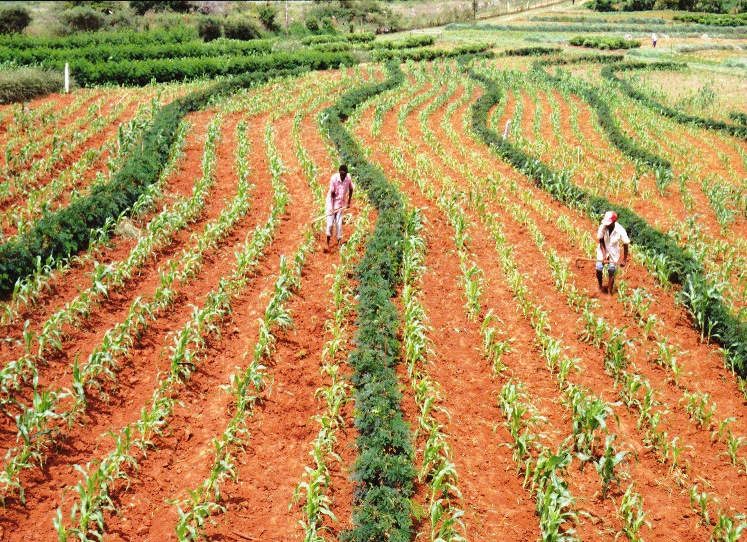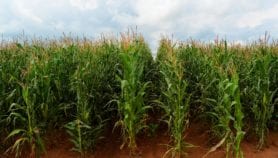08/04/19
Reasons for low uptake of climate change technologies

Send to a friend
The details you provide on this page will not be used to send unsolicited email, and will not be sold to a 3rd party. See privacy policy.
As the world grapples with rising food insecurity and greenhouse gases such as carbon dioxide and methane that trap heat in the atmosphere resulting in global climate change, there have been calls for urgent action.
Given that carbon dioxide contributes to most greenhouse gas emissions and crops need it for their growth, technologies that aid soil carbon sequestration — a process of removing carbon dioxide contained in the atmosphere through photosynthesis and storing it in vegetation and soils — have a double effect of tackling food insecurity and mitigating climate change.
These technologies include application of biochar, a charcoal produced from plant matter and used as soil manure, to aid soil carbon sequestration. Others include agroforestry, organic agriculture and use of green manure and mulching.
“Most of these technologies are low-cost solutions for improving agricultural productivity, resilience and carbon sequestration.”
Elizabeth Njoki Mwangi, Climate Technology Centre and Network
Most of these technologies are low-cost solutions for improving agricultural productivity, resilience and carbon sequestration. As a result, these technologies are attractive to smallholders.
But smallholders’ uptake of these technologies is low, and thus we need to rethink our approach to fighting climate change and food insecurity.
At a capacity building forum on technologies to enhance and monitor soil carbon held at World Agroforestry Centre headquarters in Kenya last year, major barriers to their adoption in Africa came to light. I describe these barriers next.
Less functional national designated entities
*National Designated Entities (NDE) serve as each country‘s technology focal point under the United Nations Framework Convention on Climate Change (UNFCCC) Technology Mechanism. These entities are tasked with supporting climate technology deployment in their countries, and facilitating submission of technical assistance requests by stakeholders to the CTCN.
In many countries however, there is a lack of resources or capacities for the NDE office to manage this ambitious agenda. With this in mind, the CTCN has supported NDEs and strengthened their capacities to promote technology opportunities in their countries and submit and manage requests for CTCN assistance, by conducting national and regional NDE workshops and incubator programmes. National governments, as parties of the UNFCCC, have the opportunity to provide adequate support to their National Designated Entities so they can act as technology champions in their countries and support wide-scale adoption of green technologies for low-carbon development and increased resilience to climate change.
Cross-cutting nature of climate change
The cross-cutting nature of climate change brings about complexity in the formulation and implementation of policies aimed to fight it. This is brought about by the fact that there are often too many institutions dealing with climate change issues. These institutions lack coordination.
“It is time to rethink our approach to managing climate change to ensure we not only survive but boost food security and thrive.”
Elizabeth Njoki Mwangi, Climate Technology Centre and Network
Climate change policies also lack enough representation at top government level. This results in poor integration of climate change issues in planning and budgeting. Without deliberate financial allocation, it is impossible to translate policy into action. This explains why climate technology adoption has remained just as a dream. There is a need for coordinated approaches across sectors to ensure that we address challenges posed by climate change while tapping into the opportunities it also brings.
Lack of pilot projects scale-up
More often, adoption is high when demonstrations and proven technologies are carried out. But how often do we see scale-up of promising pilot projects? Scaling up needs consideration of several factors. It requires an enabling environment that entails working policies and support systems designed from the household level to enable solutions that resonate well with individual needs and the capacity building and incentives for adoption such as carbon credits schemes can encourage technology adoption.
Also, funding is needed for project scale-up. Because agricultural systems in Africa are predominantly practised by smallholders and are dependent on the rain, access to funding from mainstream financial institutions is limited. Small-scale farming lacks the comparative advantages of large-scale farming and is seen as very risky, partly due to the vulnerability caused by climate change. Therefore, access to finances is critical for technologies scale up and there is a great need to de-risking smallholders’ systems through innovative initiatives such as Index Based Weather Insurance.Climate change is happening, and Africa’s vulnerability puts us in a tight spot. It is time to rethink our approach to managing climate change to ensure we not only survive but boost food security and thrive. Let’s embrace technology because it is among our greatest weapons.
Elizabeth Njoki Mwangi is a climate change adaptation and capacity development associate for Eastern and Southern Africa & West and Central Asia at the Climate Technology Centre and Network (CTCN), UNFCCC. She can be reached on email via [email protected]
This piece was produced by SciDev.Net’s Sub-Saharan Africa English desk.
*Correction: *
A correction has been made on this story’s section dealing with the National designated entities as requested by the author.
References
[1] Conservation agriculture with trees: principles and practice (World Agroforestry Centre [ICRAF], 2014)
[2] The state of food and agriculture: climate change, agriculture and food security (UN FAO, 2016)













